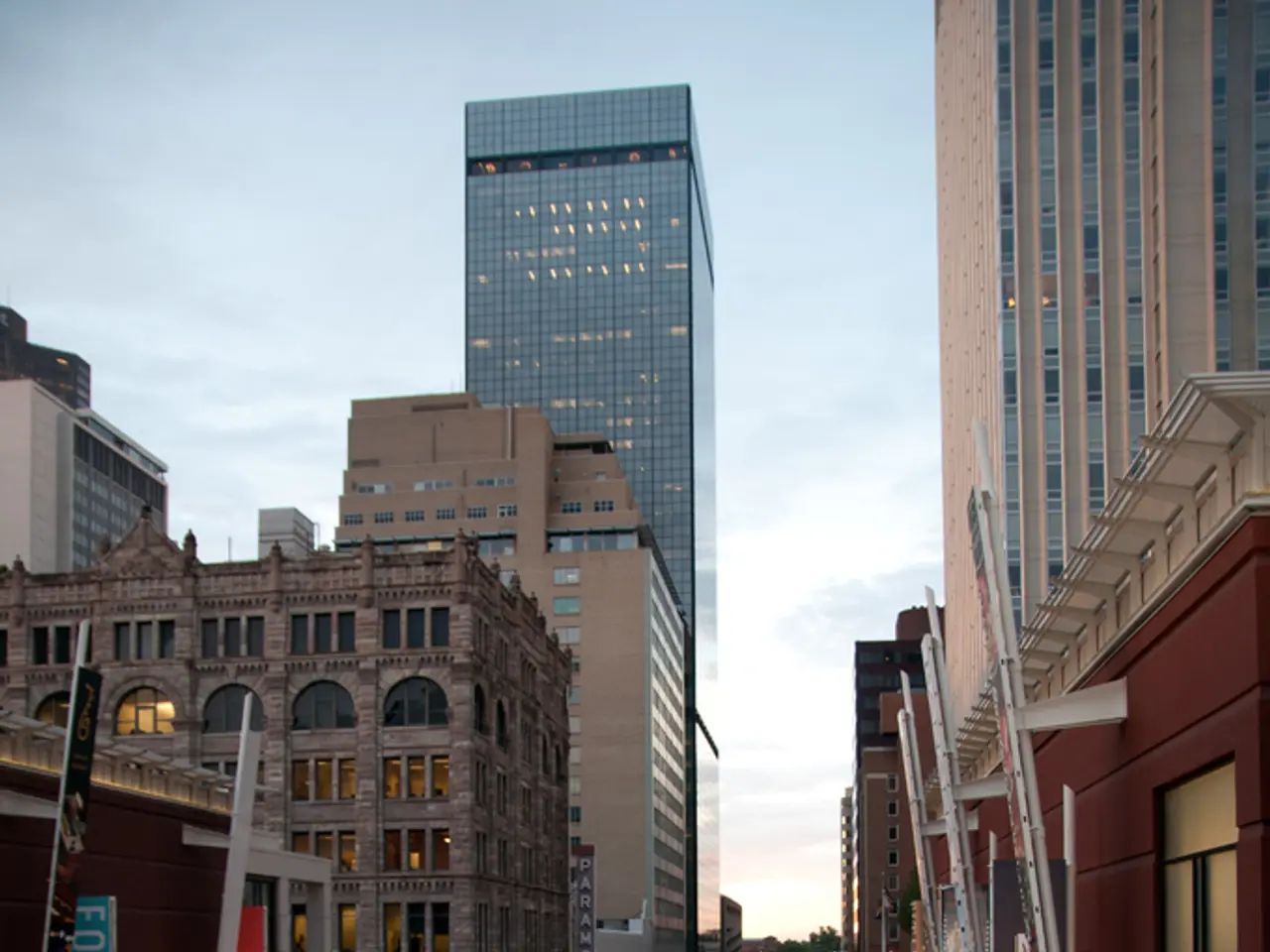Persistent fires and flooding have long been a challenge in L.A., yet captivating advertising drew in countless new residents regardless
The Growth and Transformation of Los Angeles: A Tale of Infrastructure, Innovation, and Ambition
Los Angeles, the bustling metropolis we know today, did not grow naturally but was conjured into existence. The city's transformation from a small, resource-poor pueblo into a global hub is a fascinating tale of strategic location, infrastructure development, technological progress, and ambitious leadership.
Indigenous Origins and Spanish Colonization
The story begins with a Tongva village called Yaanga, which was later claimed by Spanish explorer Juan Rodríguez Cabrillo in 1542. The city itself was founded in 1781 by Spanish colonial settlers as El Pueblo de Nuestra Señora la Reina de los Ángeles, a modest ranching pueblo with a small population.
Mexican and Early American Periods
After Mexico's independence in 1821, Los Angeles served as a regional capital in Alta California. The U.S. acquired California following the Mexican-American War (1846–1848), transitioning the area into American hands and opening it up for new development and settlement.
Industrial Revolution and Technological Advances
Although Los Angeles lacked abundant natural resources initially, the broader Industrial Revolution brought innovations in transportation (railroads, steamships), communication (telegraph), and energy (electricity, petroleum) that facilitated urban growth and economic diversification. These technological advances allowed Los Angeles to leverage its location and connections rather than relying solely on local natural resources.
Water Infrastructure Development
A critical factor in Los Angeles' growth was the expansion of its water supply, especially the acquisition of distant water rights, such as from the Owens Valley. This effort was championed by influential local figures like Harrison Gray Otis, editor and owner of the Los Angeles Times, whose advocacy supported civic boosterism and city growth. The availability of water was pivotal in enabling large-scale urban and agricultural expansion in an otherwise arid region.
Rise of Entertainment and Real Estate
Early in the 20th century, Los Angeles became the center of the emerging film industry, particularly Hollywood, which attracted investment and population growth. Real estate developers also played a role, buying and developing land, further transforming the cityscape.
Urban Planning and Zoning
Los Angeles was among the first U.S. cities to institute municipal zoning (starting in 1908), facilitating organized urban expansion and separation of land uses, which supported its metropolitan growth.
The explosive growth of the 1920s and 1930s led to reassessments of what it had taken to bring Los Angeles to its newfound stature as a metropolis. The city's focus on advertising and selling itself was critiqued by Morrow Mayo in his 1933 book, "Los Angeles."
During this period, Los Angeles surpassed San Francisco in population, a development that was in some respects preordained, given the city's geographical advantages. San Francisco is geographically constrained, while Los Angeles lies within a vast basin capable of supporting a population of over 13 million.
The water supply of Los Angeles comes from a river valley 200 miles away, and its electricity comes from a river canyon 300 miles to the east, testament to the city's ingenuity and determination in overcoming its initial resource constraints.
The Gold Rush had little impact on the region south of Monterey, but it did boost the Southern California cattle industry briefly. Mexican ranchers flooded the market with livestock, causing beef prices to plummet by 75% in 1855.
By 1887, 120,000 passengers were brought into Los Angeles by the Southern Pacific railroad, marking a significant milestone in the city's growth.
In the late 1800s, Charles Nordhoff wrote about the regional climate's health benefits for tuberculosis patients, and in the first decade after the Gold Rush, Southern California's Mediterranean climate was promoted as having health benefits. This, combined with the lack of common diseases such as cholera and typhoid, made Los Angeles an attractive destination for many.
In the context of the Gilded Age, Charles Dudley Warner reported that diseases common elsewhere were unknown in Los Angeles. Many new townsites were established in Los Angeles, often with no economic activity beyond real estate speculation.
The book "GOLDEN STATE: The Making of California" by Michael Hiltzik, published by Mariner Books in 2025, provides a comprehensive account of the historical context that led to the growth and transformation of Los Angeles into a major metropolis.
- Despite a modest start as a small, resource-poor pueblo, Los Angeles' transformation into a global hub was driven by strategic location, infrastructure development, technological progress, and ambitious leadership.
- Critical to Los Angeles' growth was the expansion of its water supply, such as the acquisition of distant water rights from the Owens Valley, supported by influential figures like Harrison Gray Otis.
- Early in the 20th century, Los Angeles became the center of the emerging film industry, particularly Hollywood, attracting investment and population growth, while real estate developers also played a significant role in transforming the city.
- Los Angeles' lack of abundant natural resources initially was compensated by the broader Industrial Revolution, which brought innovations in transportation, communication, and energy, allowing the city to leverage its location and connections.
- The explosive growth of the 1920s and 1930s led to reassessments of the city's growth strategies, and Morrow Mayo critiqued the city's excessive advertising and self-promotion in his 1933 book, "Los Angeles."
- To overcome its initial resource constraints, Los Angeles relies on water from a river valley 200 miles away and electricity from a river canyon 300 miles to the east, embodying the city's ingenuity and determination.








